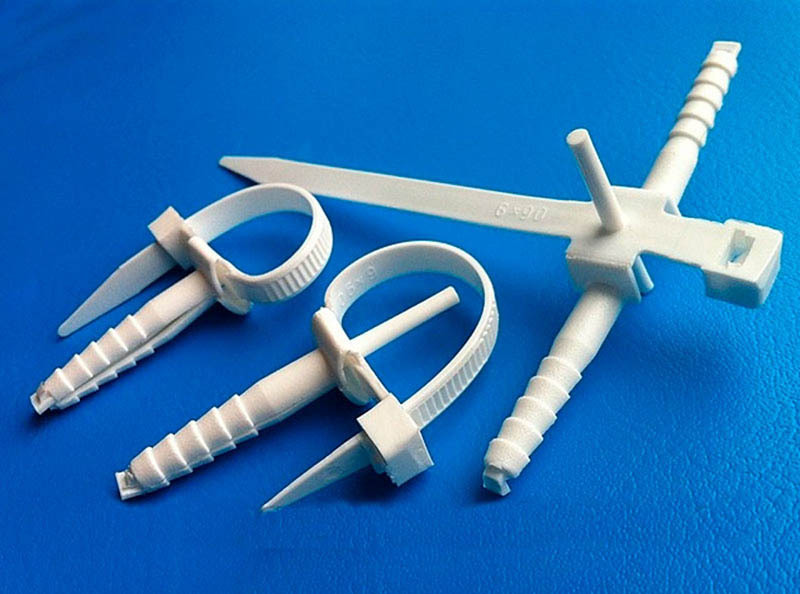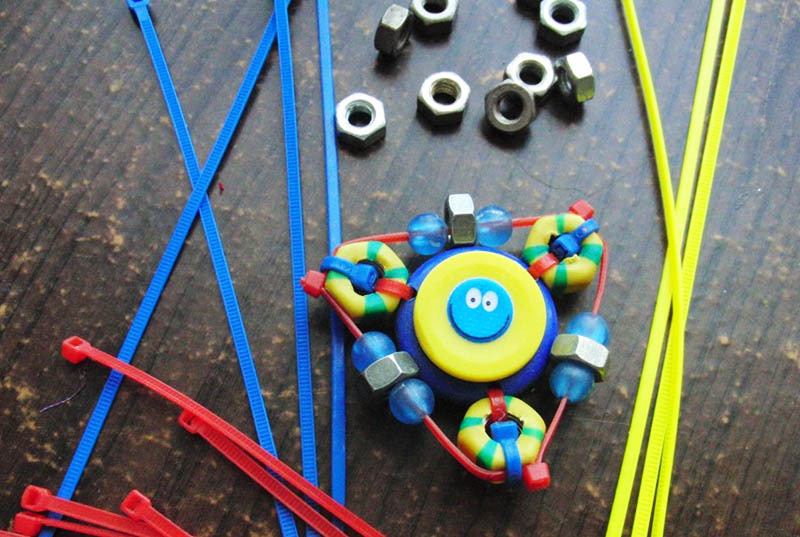Plastic cable ties are quite versatile. For whatever purposes they are not used. However, today it is worth talking about the direct purpose of plastic ties. Many people underestimate their convenience and ease of use, preferring to collect wires in bundles using improvised means. Along the way, we will try to convince those skeptics who claim that such products are short-lived.
Read in the article
- 1 What is a plastic screed, and how does one of them differ from the other
- 1.1 Differences in screeds by material of manufacture
- 1.2 What are the locks on plastic ties
- 1.3 Standard retainer with metal insert
- 1.4 Clamp with reinforced lock
- 1.5 Plastic Ties with Ball Locks
- 1.6 Velcro lock and its features
- 2 Some nuances of using plastic cable ties
- 3 Which cable ties are better to choose
- 4 Final part
What is a plastic screed, and how does one of them differ from the other
Plastic ties are products that can be used to assemble several wires into one bundle and fix them in this position. They represent a narrow tape with a lock.

Often, DIYers refuse plastic ties in favor of electrical tape or metal clamps. The reason for this is the purchase of extremely cheap products of low quality. However, it happens that the craftsmen themselves incorrectly use plastic clamps, which leads to the fact that the lock breaks. Let's try to figure out how to choose plastic ties of acceptable quality at a low cost.

Differences in screeds by material of manufacture
The production material for the screed can be:
- Polyethylene.
- Nylon.
- Polypropylene.
As for the first option, such ties are suitable only for temporary fixation. Do not expect them to last more than a year. But nylon and polypropylene products are more durable. In addition, they are not afraid of direct sunlight, which can also be called a plus.

What are the locks on plastic ties
The most common for home craftsmen are standard locks. They look like a small loop located at one of the ends of the clamp with a tongue inside it. There are transverse notches along the entire length of the clamp, for which this tongue clings. Plastic ties with such locks are the cheapest, but their quality leaves much to be desired.

Standard retainer with metal insert
In fact, this option can be compared with the previous one, but it is more reliable. The retaining tongue is not plastic, but metal (most often stainless steel). Be careful when tightening these clamps. Pull the clamp smoothly to avoid breakage.

Clamp with reinforced lock
This type can also be compared with the standard one, only two brackets are already used for the lock here. This improves the reliability of the fixation.

Plastic Ties with Ball Locks
Probably the most convenient plastic clamp locks invented today. The plastic ball (the entire clamp consists of them) goes into the hole, but it cannot go back out, falling into a narrower slot.

Velcro lock and its features
This option is suitable for those cases when it is planned to subsequently add cables or wires to the bundle. These reusable clamps are extremely convenient.


Some nuances of using plastic cable ties
When using such clamps, certain rules must be followed.
First, you should pay attention to characteristics such as:
- product strength;
- the strength of the lock, the reliability of fixation;
- warranty period of service;
- resistance to ultraviolet rays, external factors, combustion;
- the value of the temperature range that the product can withstand.
When tying conductive cables, do not overtighten the clamps too much - this will damage both the outer and the main insulation.

Which cable ties are better to choose
The best are cable ties made of nylon. This material can withstand temperatures as low as -85 ° C. The working range is considered to be -40... + 85 ° С. However, it must be remembered that the installation of nylon ties is allowed only at an ambient temperature of at least +3 ° C.

In terms of tensile strength, the nylon tie also performs very well. The maximum possible load will depend on the band width of the clamp (in mm):
- 2.5-8 kg;
- 3.6-18 kg;
- 4.8-22 kg;
- 7.6-7.9-55 kg;
- 9-80 kg;
- 12.6-110 kg.

Final part
Plastic cable ties can rightfully be considered a versatile product. They are used for any fasteners, in addition to this, they are also used in the manufacture of various crafts. However, do not forget that they also have a direct purpose - connecting many wires into bundles. And such connections will be much stronger than using electrical tape (if it is not blue). The main thing is not to overtighten the clamp so as not to damage the insulation.
We really hope that the information presented in today's article will be useful to home craftsmen. HouseChief editors will be happy to answer any questions that might arise during the reading process. You just need to explain their essence in the comments below. There you can also discuss the reliability of various materials for the manufacture of ties and types of locks for them. If you liked the article, do not forget to rate it. Your opinion helps our authors to develop in the right direction. And finally, we bring to your attention a short video that will help you to more fully reveal today's topic.



